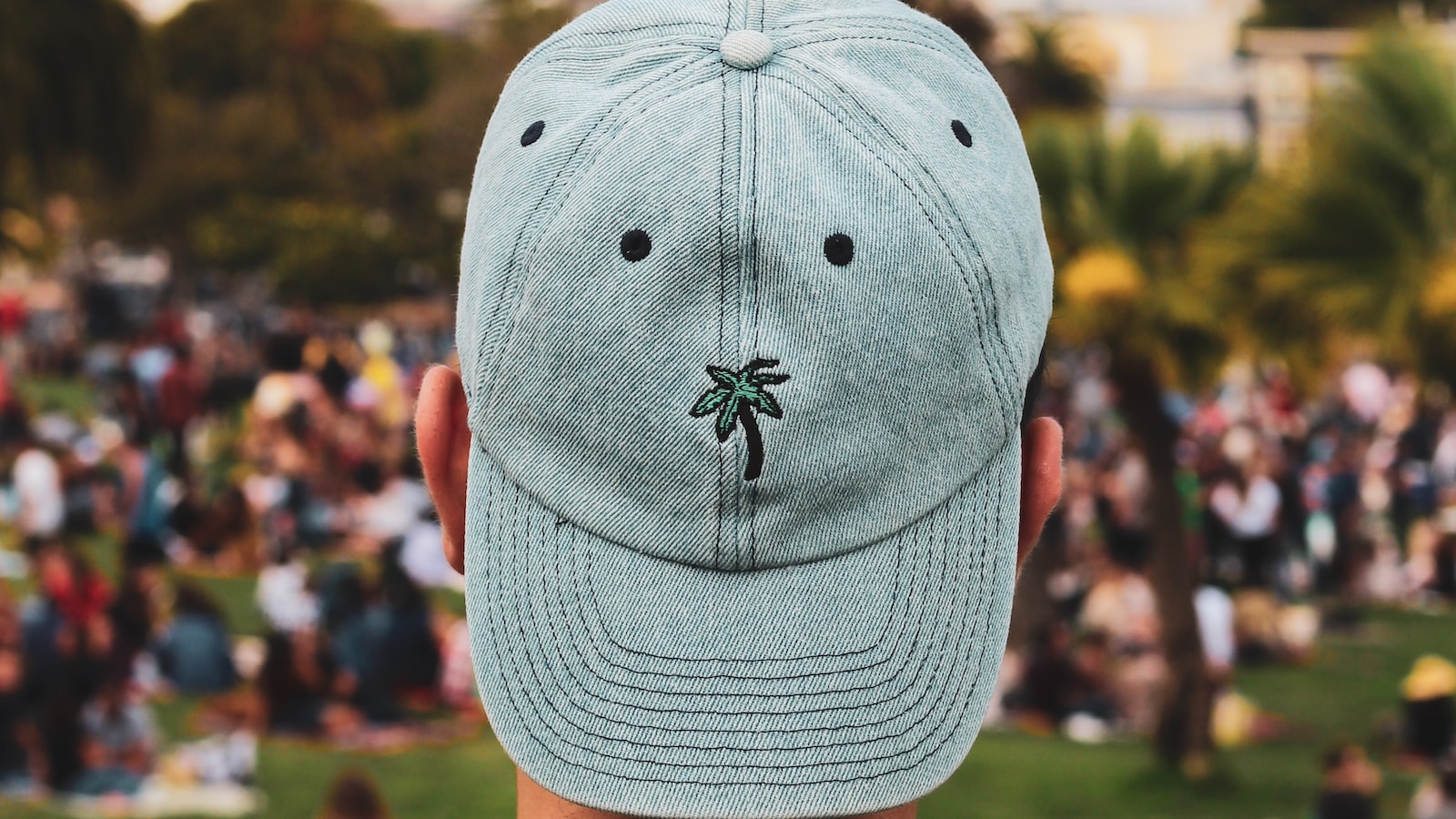Does Wearing Hats Cause Dandruff

The question of whether wearing hats can cause dandruff has been around for some time. While some people believe that wearing hats can lead to dandruff, there is little scientific evidence to support this claim. In this article, we will explore the potential link between wearing hats and developing dandruff, as well as other factors that may be contributing to an increase in dandruff symptoms. We will also look at ways to prevent and treat dandruff, regardless of whether or not it is caused by wearing hats.Dandruff is a common scalp condition that is characterised by the presence of white flakes on the scalp and in the hair. It is caused by an overgrowth of a yeast-like fungus called Malassezia, which lives on the scalp. Dandruff can also be accompanied by itching, redness, and irritation.
Can Wearing Hats Cause Dandruff?
Wearing hats can indeed contribute to dandruff, but it is not the only factor. Dandruff is a common skin condition that is caused by several different things. Wearing hats can be a contributing factor to dandruff, but it is not the only one. Other factors that may cause dandruff include dry skin, sensitivity to certain hair products, certain medical conditions, and even stress.
When wearing hats, your scalp is covered and deprived of air. This can cause the scalp to become dry and irritated, leading to an increased production of dead skin cells. When this happens, the dead skin cells accumulate on the scalp and form flakes which are commonly referred to as dandruff. Additionally, sweat and oils that accumulate under the hat can also lead to the growth of fungus on your scalp which can contribute to dandruff as well.
The best way to prevent dandruff caused by wearing hats is to keep your scalp clean and moisturized. Make sure you wash your hair regularly with an anti-dandruff shampoo and use a deep conditioner afterwards. You should also avoid wearing hats too often or for long periods of time in order to allow your scalp some air circulation. Lastly, if you do wear a hat for long periods of time make sure you take it off every few hours in order give your scalp some breathing room.
It’s also important to note that wearing hats will not necessarily cause dandruff in everyone; it depends on your individual circumstances such as skin type or sensitivity level. However, if you are prone to getting dandruff or have a known sensitivity then you should take extra care when wearing hats in order to minimize any potential effects on your scalp health.
Is Wearing Hats a Risk Factor for Dandruff?
Dandruff is a common scalp condition that is usually caused by a fungus known as Malassezia, but can also be caused by dry skin. Although it is not contagious, dandruff can still be embarrassing and uncomfortable. It is often associated with itchy, flaky skin on the scalp. Some people believe that wearing hats can increase the risk of dandruff, but is this true?
The short answer is no, wearing hats does not increase the risk of dandruff. In fact, wearing a hat could potentially reduce the risk of developing dandruff. This is because hats provide extra protection from the sun and wind which can cause dryness on the scalp. Additionally, hats can help keep dirt and debris from settling onto the scalp which could clog pores and irritate skin.
However, there are some cases where wearing hats could potentially increase your risk of developing dandruff. Some hats are made from materials such as wool or synthetic fibers which can trap sweat and oil on the scalp and create an ideal environment for Malassezia to grow. Furthermore, if you wear your hat too tightly it may cause friction on your scalp which can lead to irritation and dryness.
In conclusion, wearing hats does not generally increase your risk of developing dandruff. However, if you are prone to getting dandruff you should pay close attention to how you wear your hat in order to avoid any potential irritation or additional moisture build-up on your scalp.
What Are the Symptoms of Dandruff?
Dandruff is a common scalp disorder that causes flaking of the skin on the scalp. It’s marked by white flakes of dead skin, which may be accompanied by itching and redness. These flakes can range from small and barely visible, to large and very noticeable. Dandruff can be embarrassing, but it’s usually not serious or contagious.
Dandruff is caused by an overgrowth of a yeast-like fungus found on the scalp. This fungus is called Malassezia globosa, and it feeds on oils produced by your scalp. The resulting irritation causes your scalp to produce more oils than normal, leading to an increase in cell turnover. As new cells are generated, older cells die and clump together as flakes that are shed from your scalp.
The most common symptoms of dandruff are visible flakes of dead skin on the scalp, hair, or shoulders. The flakes can range in size from small specks that are barely visible to larger pieces that are easy to see. Other symptoms may include itching or burning sensations on the scalp, redness in the affected areas, greasy patches on the scalp, and an increase in hair loss due to scratching or irritated skin.
If you’re experiencing any of these symptoms, it’s important to speak with a doctor or dermatologist to get a proper diagnosis and treatment plan for your dandruff. Treatment may include over-the-counter products such as shampoos containing zinc pyrithione or selenium sulfide, as well as prescription medications such as topical corticosteroids or antifungal creams.
What Are Some Possible Causes of Dandruff?
Dandruff is a common scalp condition that causes flakes of skin to appear on the scalp and in the hair. It is often accompanied by itching, redness, and flaking of the scalp. While dandruff can affect people of all ages, it is most common in adults between the ages of 30 and 50. The exact cause of dandruff is unknown, however there are several possible contributing factors that have been identified. These include:
1)Excessive oil production: Sebum (an oily substance produced by glands in the skin) helps keep skin moisturized and healthy. However, when too much sebum is produced, it can lead to an overgrowth of yeast on the scalp which can cause itching and flaking.
2)Imbalanced diet: A diet lacking certain vitamins and minerals may contribute to an imbalance in skin oil production which can lead to dandruff. It is important to ensure you are getting enough essential nutrients such as zinc, B-vitamins, vitamin D, and omega-3 fatty acids for optimal skin health.
3)Not shampooing enough: Not shampooing regularly can result in an accumulation of oils on the scalp which can lead to an overgrowth of yeast and bacteria causing dandruff. It is important to shampoo regularly (at least twice a week) for optimal scalp health.
4)Stress: Stress has been linked to various skin conditions including dandruff as it has been found to contribute to an increase in oil production on the scalp which can lead to an overgrowth of yeast or bacteria causing dandruff.
5)Skin conditions: Certain skin conditions such as seborrheic dermatitis (a form of eczema), psoriasis, or even fungal infections can contribute to dandruff as they affect the natural balance of oils on the scalp leading to flaking and itching.

Is There a Link Between Wearing Hats and Dandruff?
It is common knowledge that wearing hats or caps can cause dandruff, but is there any truth to this belief? Dandruff is a common scalp condition in which flakes of skin appear on the scalp and can be embarrassing. While it is true that hats or caps can contribute to dandruff, other factors are usually involved as well.
The most likely cause of dandruff is a type of fungus called Malassezia, which lives on the scalp and feeds on the natural oils produced by the skin. This fungus causes irritation and inflammation, leading to flaky skin on the head. Although hats or caps can contribute to dandruff in some people by trapping moisture and heat from the scalp, they are not usually the primary cause.
Other factors that can lead to dandruff include stress, hormonal changes, excessive oil production, dry skin, and weak immunity. Those with oily scalps are more likely to suffer from dandruff because they have more natural oils for Malassezia to feed on. For this reason, it is important to keep your scalp clean and free of oils by regularly shampooing your hair.
Hats or caps can also contribute to dandruff for those who wear them frequently as they trap moisture and heat against the scalp which encourages fungal growth. If you wear a hat or cap often, it’s important to wash them regularly with an anti-fungal shampoo in order to reduce your risk of developing dandruff. Additionally, make sure you take off your hat when you are indoors in order to give your scalp some breathing room.
Overall, while hats or caps may contribute to dandruff in some cases, other factors are usually involved as well such as stress levels, hormones levels and weak immunity. Therefore it is important to consider all possible causes when trying to treat this condition.
What Are the Benefits of Wearing Hats?
Wearing hats can provide many benefits, both physical and psychological. On a physical level, hats can help to protect your head from the sun’s harmful rays. They are also often used to shield your face from wind or rain. In colder climates, wearing a hat can help to keep your head and ears warm. Hats can also be used to make a fashion statement, helping you to stand out in a crowd.
Psychologically, wearing hats has been shown to boost self-confidence and increase feelings of security. This is because a hat acts as an external source of protection that helps you feel more secure in public places or social situations. It can also give you an air of authority or respectability when necessary, making it easier for you to interact with others in certain settings.
Finally, hats can be used as an expression of personal style or preferences. There are so many different types of hats available that it’s easy to find one that fits your individual look and aesthetic. Whether you prefer baseball caps, fedoras, beanies or something else entirely, there is sure to be a hat that helps you express yourself and feel more confident in any situation.
In conclusion, wearing hats offers numerous physical and psychological benefits that make them a great addition to any wardrobe. So if you’re looking for an easy way to make a fashion statement or simply want some extra protection from the elements, donning a stylish hat may be just the ticket!
What is Dandruff?
Dandruff is a common scalp condition that causes white or gray flakes of skin to appear on the scalp and in the hair. It can be embarrassing and itchy, but it is usually not serious. The exact cause of dandruff is unknown, but it is thought to be related to a fungus that lives on the scalp, called Malassezia. Other factors such as stress, hormones, oily skin, and certain hair care products may also play a role.
How Can I Prevent or Treat Dandruff?
To prevent dandruff, it is important to keep the scalp clean and free from excess oils and dirt. Regular shampooing with an anti-dandruff shampoo can help reduce the amount of oil and dirt on the scalp. It is also important to use a gentle shampoo without harsh chemicals that can irritate the scalp. Additionally, keeping stress levels low and eating a balanced diet may help reduce symptoms of dandruff. If these measures do not help, over-the-counter anti-dandruff shampoos are available to treat mild cases of dandruff. If these do not work, a doctor may prescribe stronger treatments such as corticosteroids or antifungal medications.

Conclusion
Although wearing hats can make your scalp drier, it is not the cause of dandruff. Dandruff is caused by a combination of factors such as an overgrowth of yeast on the scalp, an imbalance in the oils that make up our skin’s natural barrier, or a reaction to certain ingredients in hair products. To prevent dandruff, people should look for ways to keep their scalp healthy and balanced, such as using mild soaps and shampoos, avoiding hairstyling products with alcohols and fragrances, and reducing stress. Wearing hats should not be avoided as long as you take measures to ensure your scalp remains healthy and balanced.
In conclusion, wearing hats does not cause dandruff but may worsen existing conditions when combined with other factors. People who wear hats often should pay attention to signs of dandruff and take proactive measures such as using mild soaps and shampoos or reducing stress in order to prevent it.
